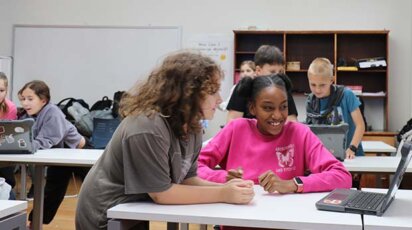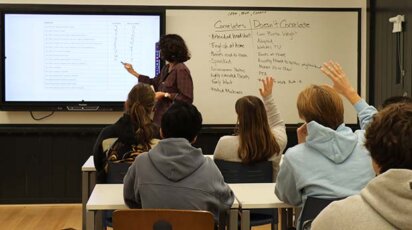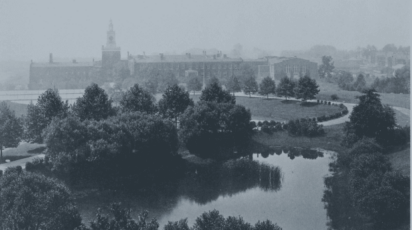News
Poly Hosts Its First HBCU Week
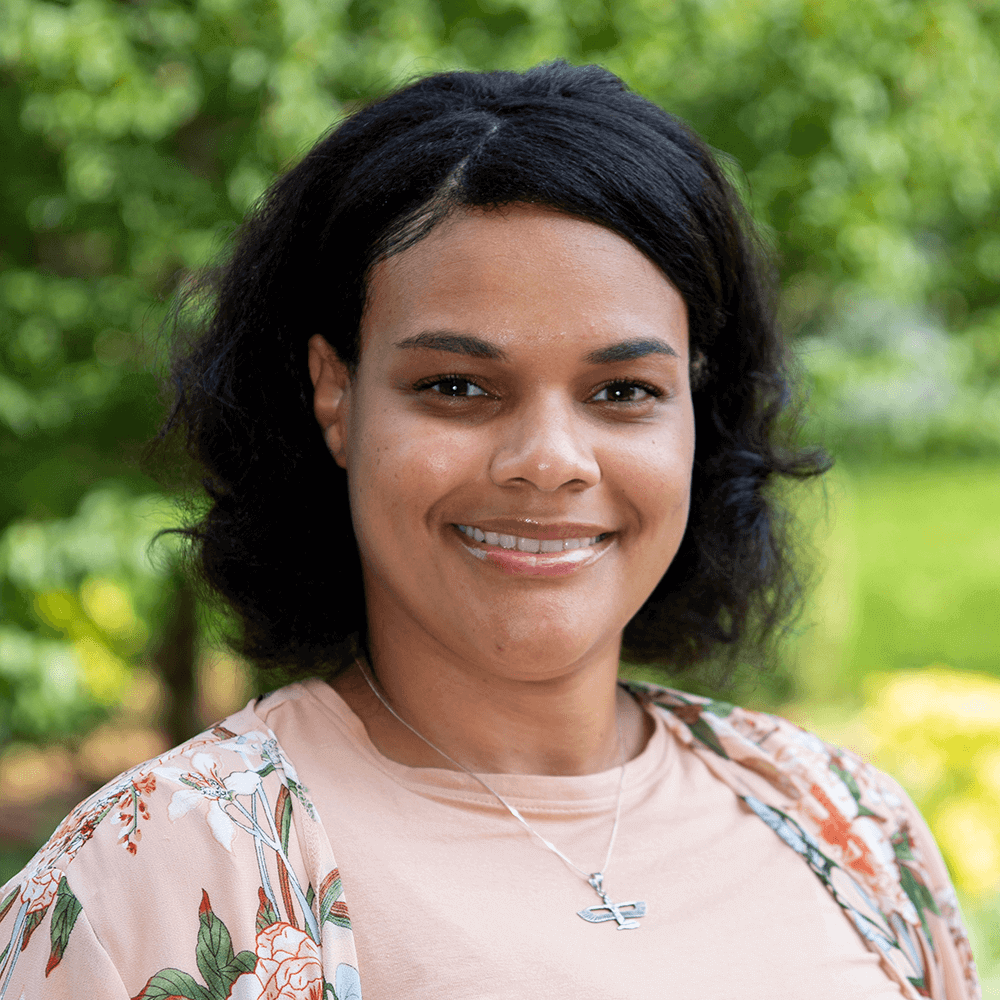
In celebration of Black History Month, Poly librarian Iman Powe-Maynard and Director of DEIB Dr. Omari Keeles hosted our first Historically Black Colleges and Universities (HBCU) Week, February 7-11. During the week, students had the opportunity to hear from Poly faculty and alumni, who are HBCU alumni, about their personal experiences, take virtual tours of HBCU campuses, learn about notable HBCU alumni, enjoy a student-led assembly presentation focused on Black history through the lens of music, and more.
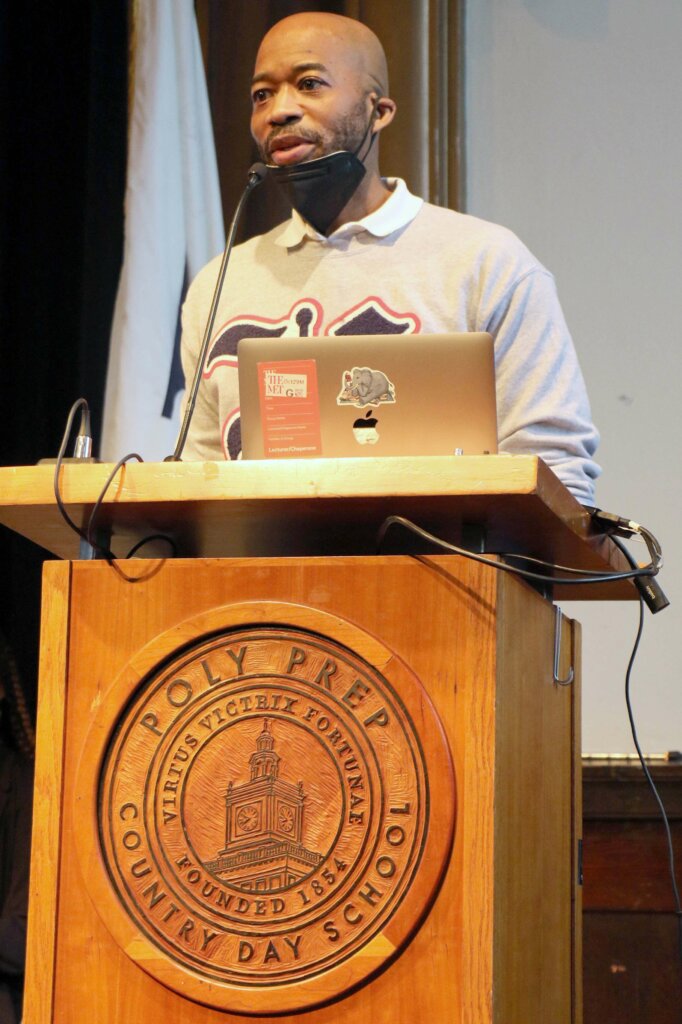
Panel Reflects on What Attending a HBCU Has Meant to Them
There are more than 100 HBCUs across the United States, enrolling more than 228,000 students. (Source)
The week opened with an Upper School Assembly featuring an in-person and Zoom panel of alumni, faculty, and staff, who are alumni of HBCUs: Powe-Maynard; Keeles; Director of Human Resources Devon Winfield; Poly alumna and Spelman College graduate Adia Benjamin ’16 ’20; history teacher Dr. Alex Carter; music teacher Dr. Orrin Wilson; math support specialist Jeremi Lewis; Howard University Law School student Drew Lewis ‘14; and Morehouse student Elijah Megginson.
Dr. Keeles opened the assembly with a short ABC News video about HBCUs, which reported that, during COVID, when many college enrollments decreased, applications to HBCUs “soared.”
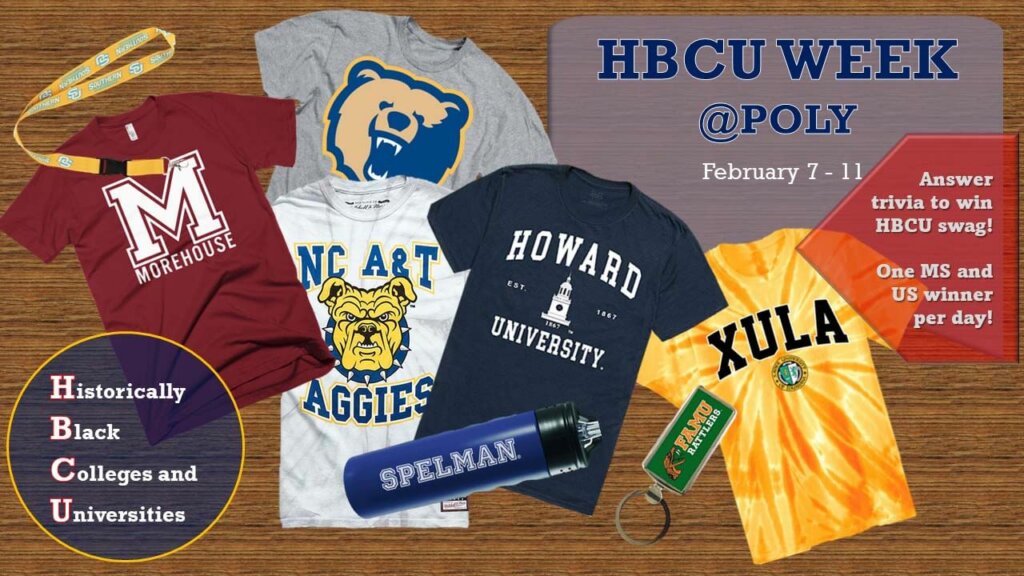
The panelists shared their reasons for choosing an HBCU. Drew Lewis talked about looking for a new experience when she chose Howard University for law school. HBCUs, she said, “are built for people who look like us.” There was nothing like the HBCU panel when she was a student in 2014, she said, and she’s thrilled it will be an annual event. Dr. Keeles said he had attended a school like Poly for high school, but that his parents encouraged him to attend Howard for college. Winfield said that a popular 1980s TV show, A Different World, which was set at an HBCU, sparked her interest. Going to the University of Maryland Eastern Shore, Winfield experienced “going to a school that represented people like me,” which “was one of the best experiences I have ever had.”
At an HBCU, “everyone looks like you,” Benjamin said, and “HBCUs build you up so no one can break you down.” Carter said that mentors at Alabama State University and the experience of walking the same paths civil rights pioneers had in Montgomery greatly influenced him. For musician Dr. Wilson, the fact that Southern University & A&M College at Baton Rouge had one of the best marching bands in the country was a deciding factor in choosing that school. HBCUs should not be seen as “safety schools,” Jeremi Lewis said, and it is a misconception that they are only for Black students. Megginson, who was accepted to Stanford, instead decided that Morehouse College was where he could “learn about myself and become a better Black man in this world.” Powe-Maynard said she did not originally plan to go to Howard, but when she saw the school, “It felt like home.”

Panelists talked about their “greatest experiences attending HBCUs.” These ranged from Homecoming to which “everybody comes back,” to sharing a common journey and identity, to gaining an education about Black history, the African continent, and the African Diaspora, which had been missing from their high school studies.
Student Responses to HBCU Panel
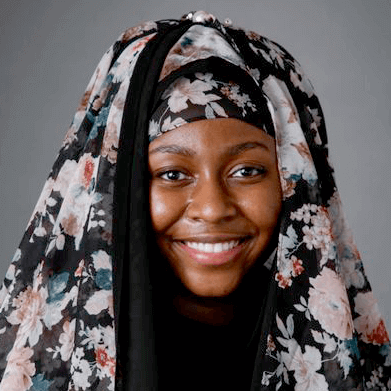
Mariama Diallo ’22 said the HBCU panel reaffirmed her decision to go to Spelman College in the fall. “I have wanted to go to Spelman since I was in the fifth grade,” Diallo said, “so my admission has been a long time coming. My mother and grandmother went to HBCUs so, if anything, the presentations enhanced my excitement and anticipation for the coming year.”
“I love the idea of having HBCU Week at Poly,” Diallo added. “I think that it is definitely necessary as we have more Black students and students of color being admitted. Moving forward, however, I feel like it would be best to have HBCU Week at the beginning of the year before Early Decision and early applications are due.”
“To hear from staff and alumni of color about why they chose these schools over Ivies or other schools was reassuring to hear as a student of color.”
After the panel, another Upper School student said, “I found it to be very insightful because although Poly is a prep school that focuses on preparing people for college, they never really shed any light on HBCUs, and so to highlight them in this way is definitely going to be helpful for many of the underclassmen. To hear from staff and alumni of color about why they chose these schools over Ivies or other schools was reassuring to hear as a student of color. There is always a heavy focus on Ivies or other PWIs [Predominantly White Institutions], and the idea that everyone who is successful has to go to these schools, but hearing and seeing the success of people of color who went to HBCUs rather than PWIs will probably be really reassuring for underclassmen who are starting to think about college and what kind of school they want to go to.”
The student added, “One of the most interesting things I remember about the assembly was when the panelists spoke about taking a history course in their first year of college that followed Black world history, separated from European and American influence. Given that history is often presented in a Eurocentric manner, hearing about the existence of such an experience was really impactful.”
HBCU Alumni Slideshow & Trivia
On Tuesday, the library featured a slideshow of notable HBCU alumni including Howard alumni Katherine Johnson, NASA computer scientist profiled in the 2016 film Hidden Figures; U.S. Supreme Court Justice Thurgood Marshall; and Nobel Prize-winning novelist Toni Morrison. Powe-Maynard also set out a display of notable books by authors who graduated from HBCUs.
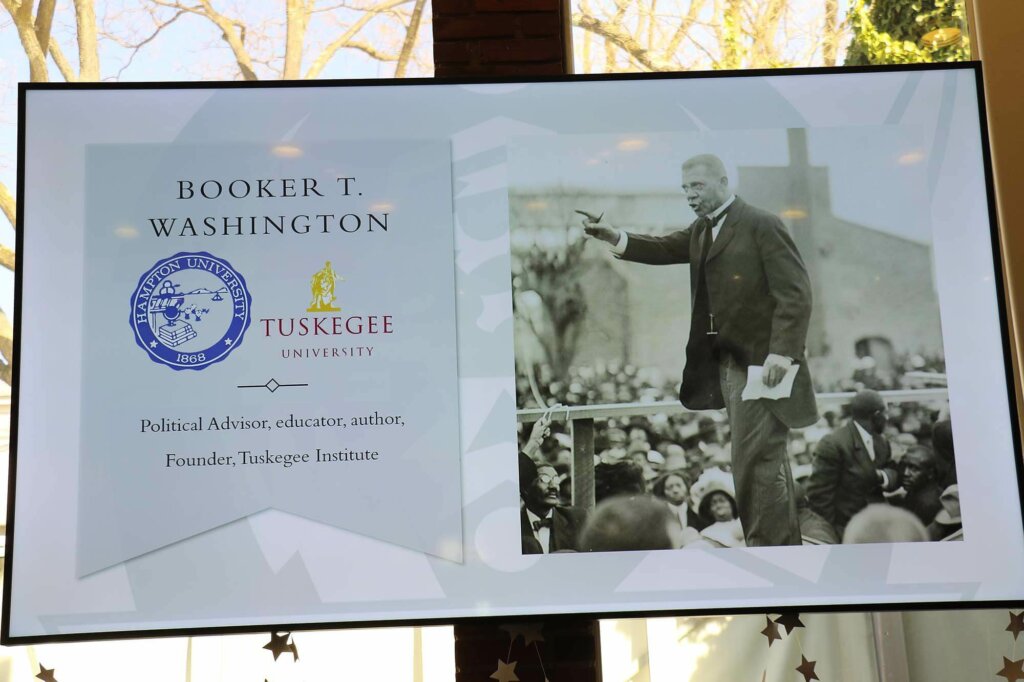
Middle and Upper School students were asked to check their email each day for HBCU Trivia questions and the opportunity to win Spirit Cup points for their Blue or Gray teams. The competition was fierce, but the daily winners included Jordan Campbell ’23, Esteban Mierisch ’29, Mykah Lieberthal ’25, Abigail Jean ’27, Maya Phillips ’25, Justin Woods-Owens ’27, Seanna Sankar ’24, Raymond Xie ’26, Malachi Costello’ 23, and Lila Suter-Chung ’28. When the results were tallied, the Blue and Gray teams had scored 50 points each.
Upper School Black History Month Assembly
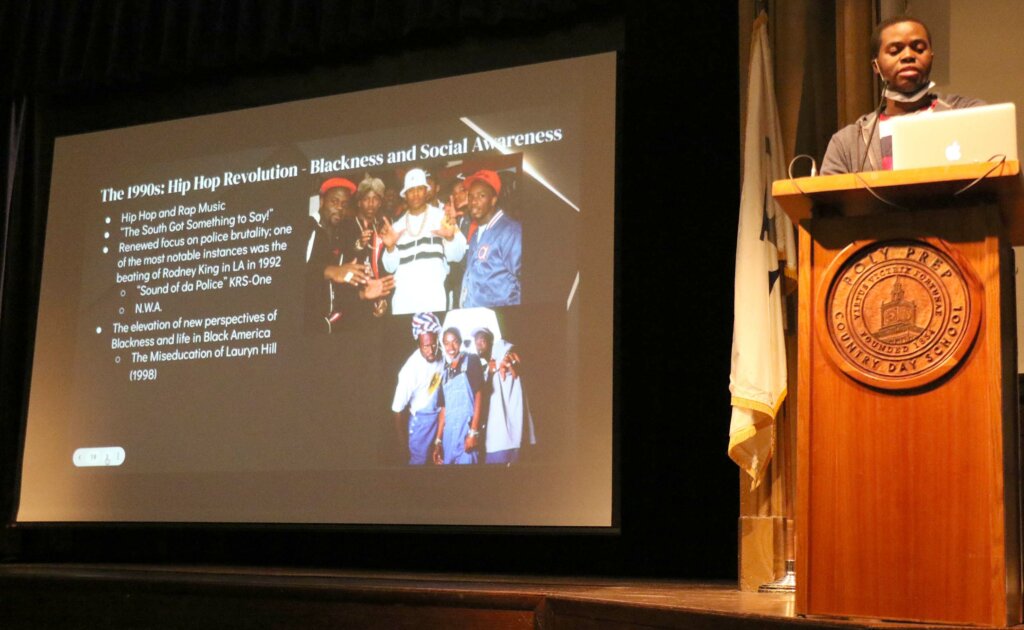
On Wednesday, Poly affinity groups Umoja and Lemonade student leaders Chaliya Holder ’22, Gabby Perry ’22, and Ryantony Exuma ‘22 arranged a music-themed Upper School Black History Month Assembly, which told the story of Black History through the lens of music in the United States. Exuma narrated a presentation which included the Harlem Renaissance and Billie Holiday’s 1939 rendition of “Strange Fruit” about lynching. He continued to the influence of Chuck Berry and Big Momma Thornton on the birth and development of rock ‘n’ roll. Exuma also noted the part protest music played in the Civil Rights Movement and the roots of hip hop, which was “born in the Bronx.” Dr. Angela Gittens spoke about the origins of African step dancing before the step team, Epiphany, performed.
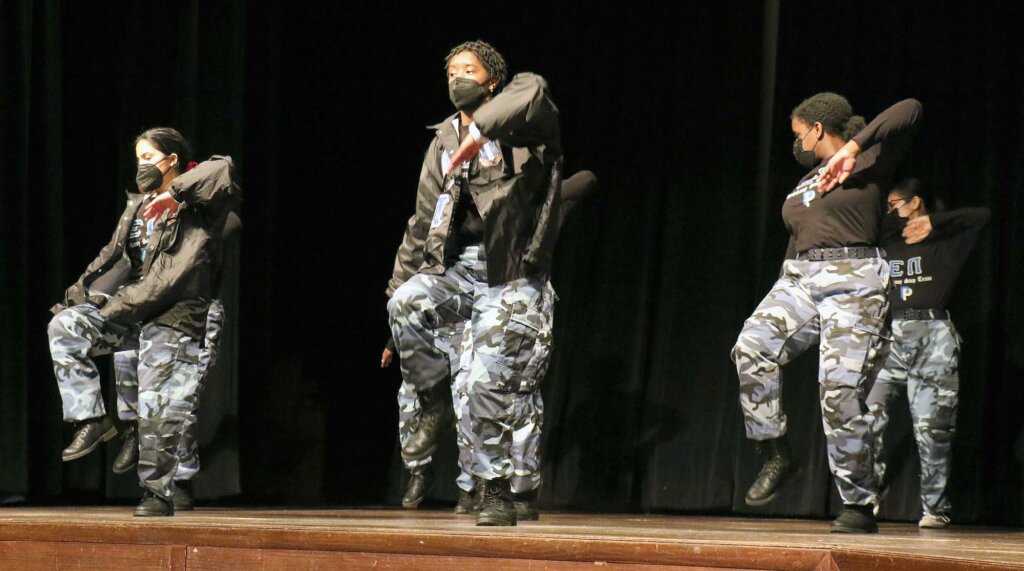
A panel of Justin Mondesir ‘23, Chaliya Holder ‘22, Lami Diallo ‘22, Gabby Perry ‘22, Noah Young ‘22, Chantal Guthrie ‘24, and Akil Foster ‘20 took part in a Q&A on subjects including “cultural appreciation and appropriation,” usage of the “n” word, and hip hop in culture.
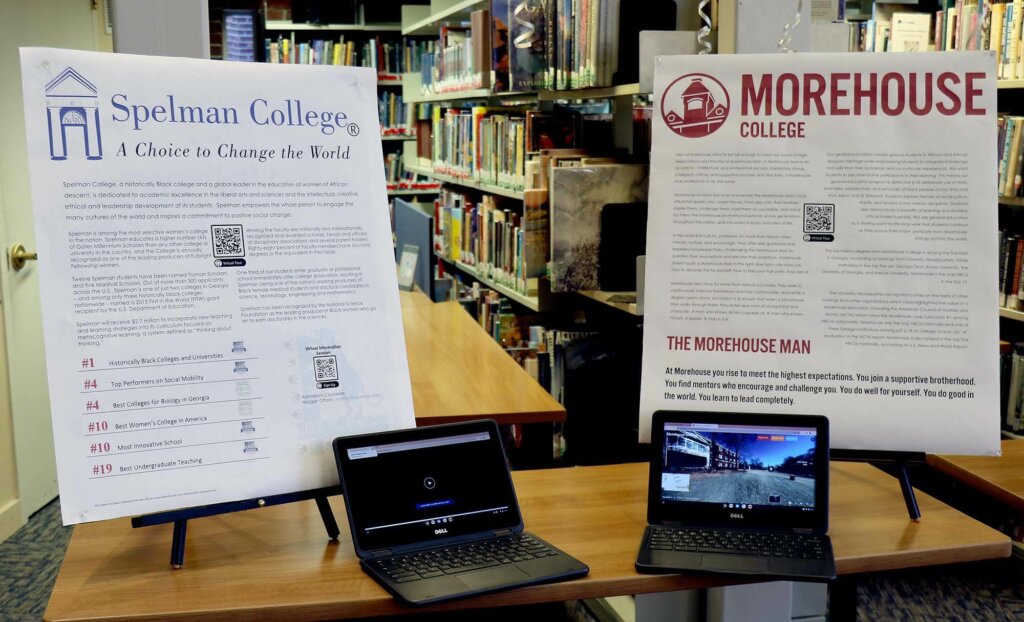
HBCU Mini Fair
On Thursday, the community was invited to a virtual HBCU Mini Fair and a screening of the documentary film Tell Them We Are Rising: The History of HBCUs in America, which examines the effects of HBCUs on national culture and identity. At the mini fair, students walking from one display to another could take virtual tours of Spelman College, Morehouse, or Howard University.
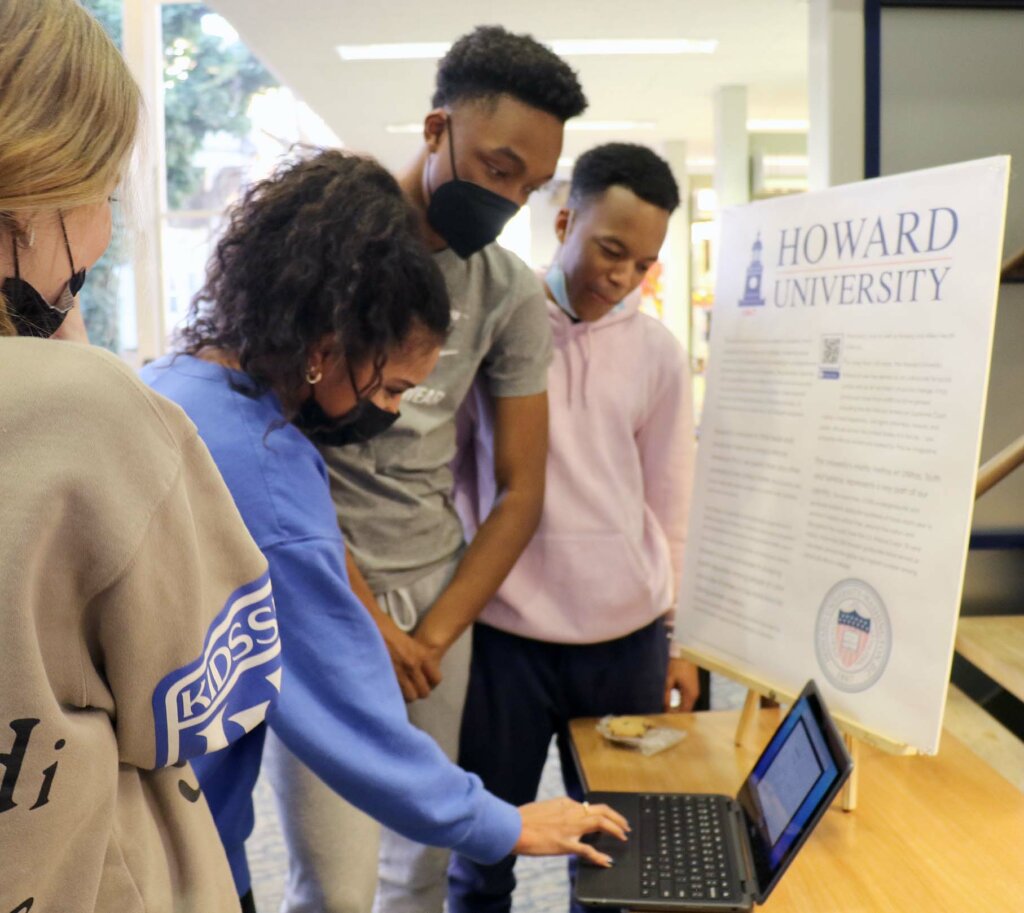
HBCU vs PWI Discussion
HBCU Week concluded with an illuminating discussion of “HBCU vs PWI” during club time in the theater. Jeremi Lewis moderated a panel of students, faculty, and alumni including Adia Benjamin ‘16, Kristin Guynn, Dr. Angela Gittens, Mariama Diallo ’22, Upper School dean Kane Willis, Dr. Orrin Wilson, Shannon Cohall ’10, and Dr. Omari Keeles. Lewis said the goal of the panel was to “compare experiences at both” so students could determine “why one might be a better fit for you.”
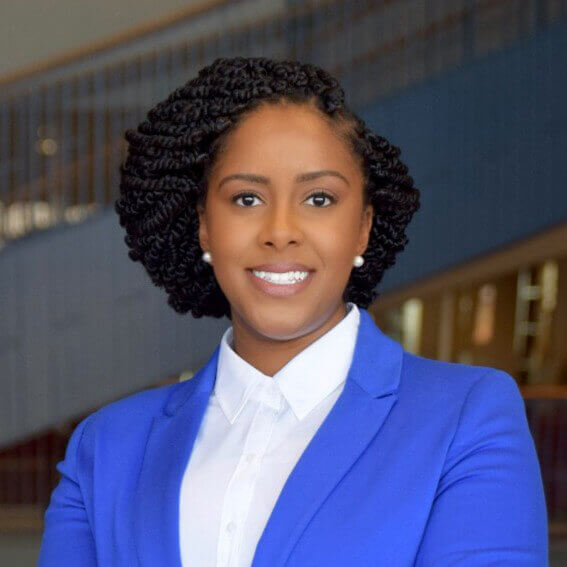
Choosing a college encompasses so many considerations and having the chance to ask alumni questions and hearing stories about personal experiences can be insightful for those just starting their journey. Panelists described their experiences at schools such as Howard, Oberlin, Spelman, George Washington University, Amherst, and Cornell. Their stories encompassed many aspects such as finding community and support in Black Student Unions, discovering the diversity and different perspectives among Black Americans, Caribbean Blacks, or Blacks in the South versus at a northern college, or the challenges in finding a place to get a haircut at mostly white Amherst. They all stressed the importance of finding a personal space and feeling of belonging at whichever school they had chosen.
Cohall expressed her pleasure at being included as a panel member and HBCU Week, which did not exist when she was at Poly. The week offered perspectives for everyone on not only HBCU institutions, but also what it means for one to feel empowered and to be part of a community.

